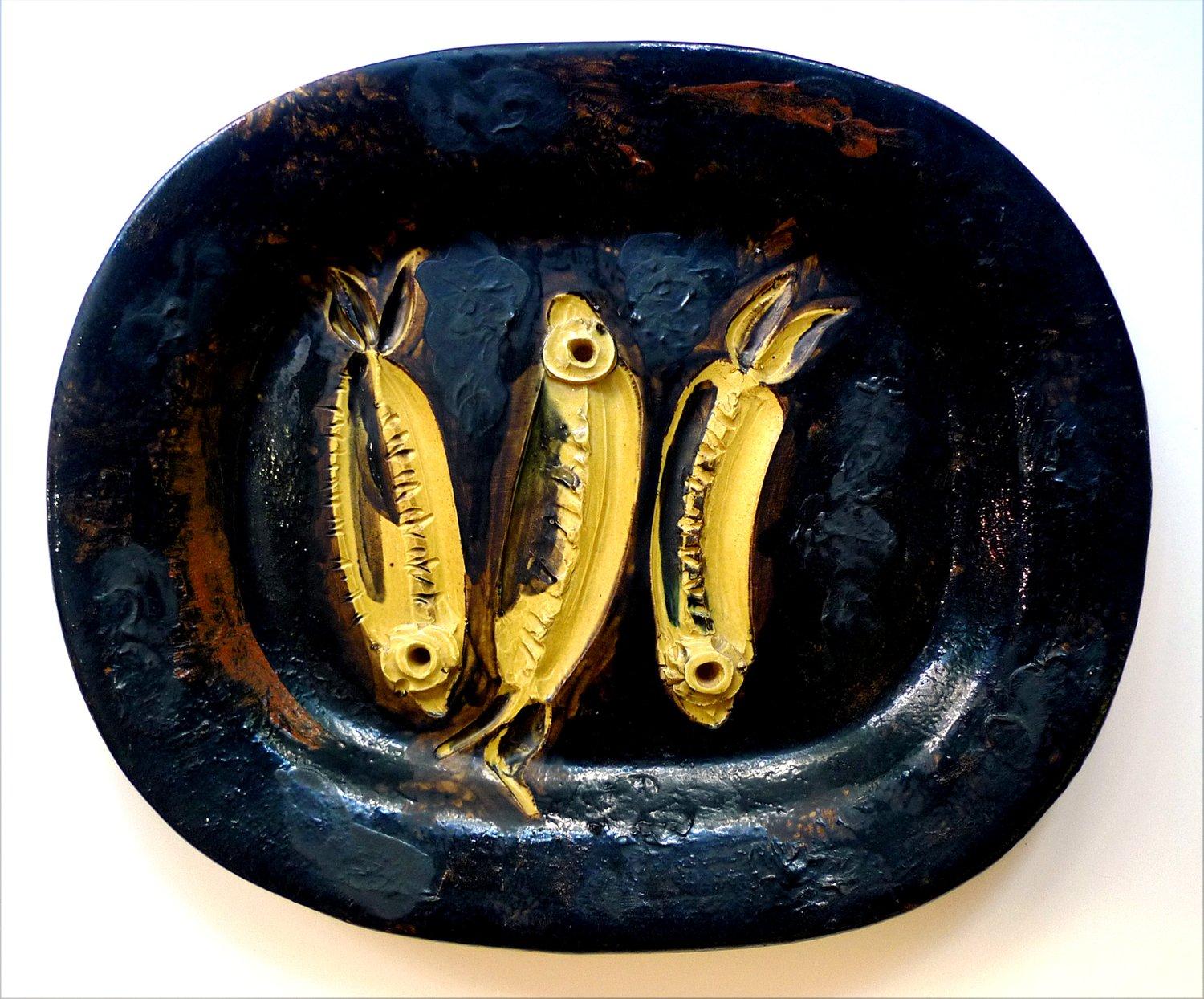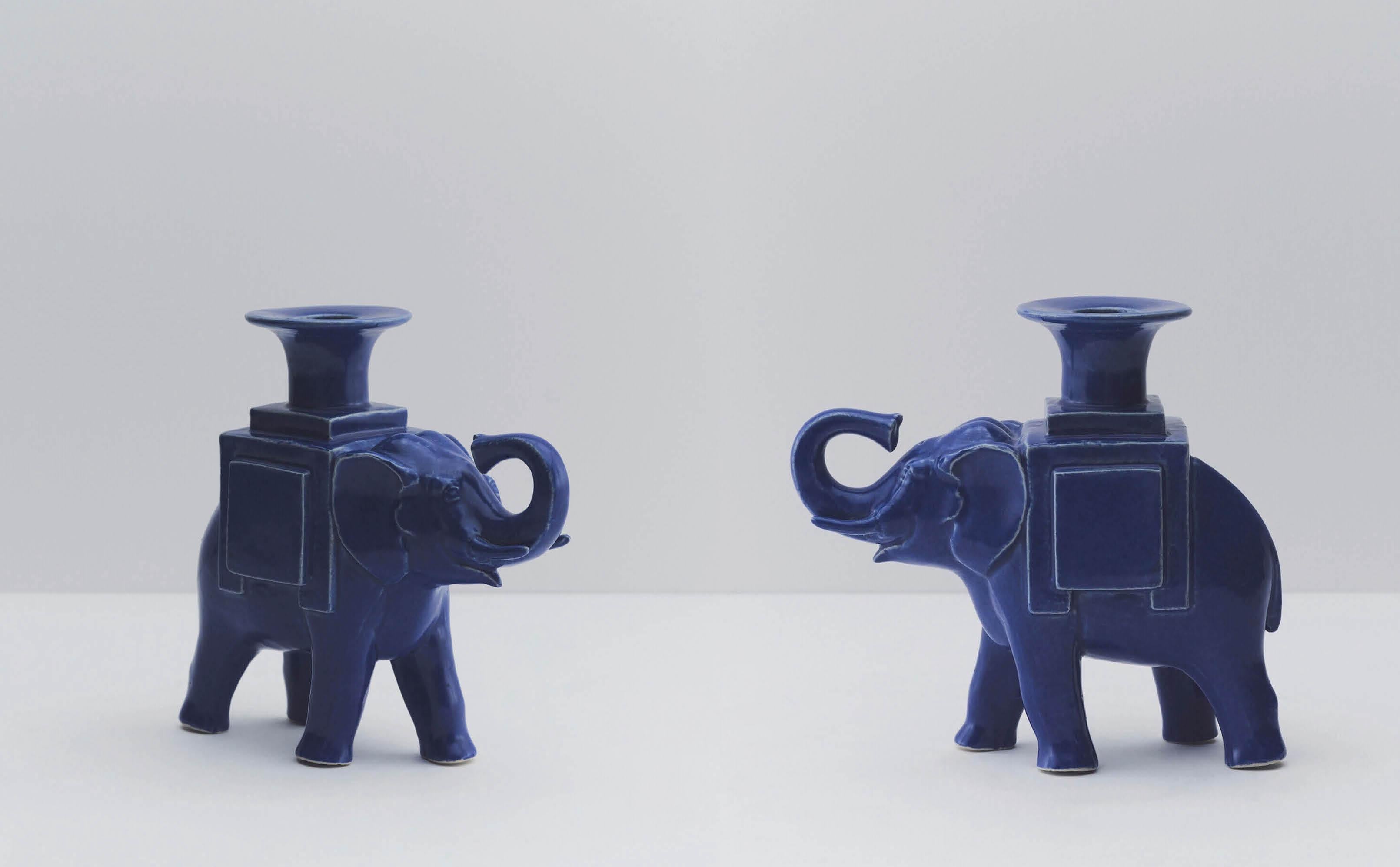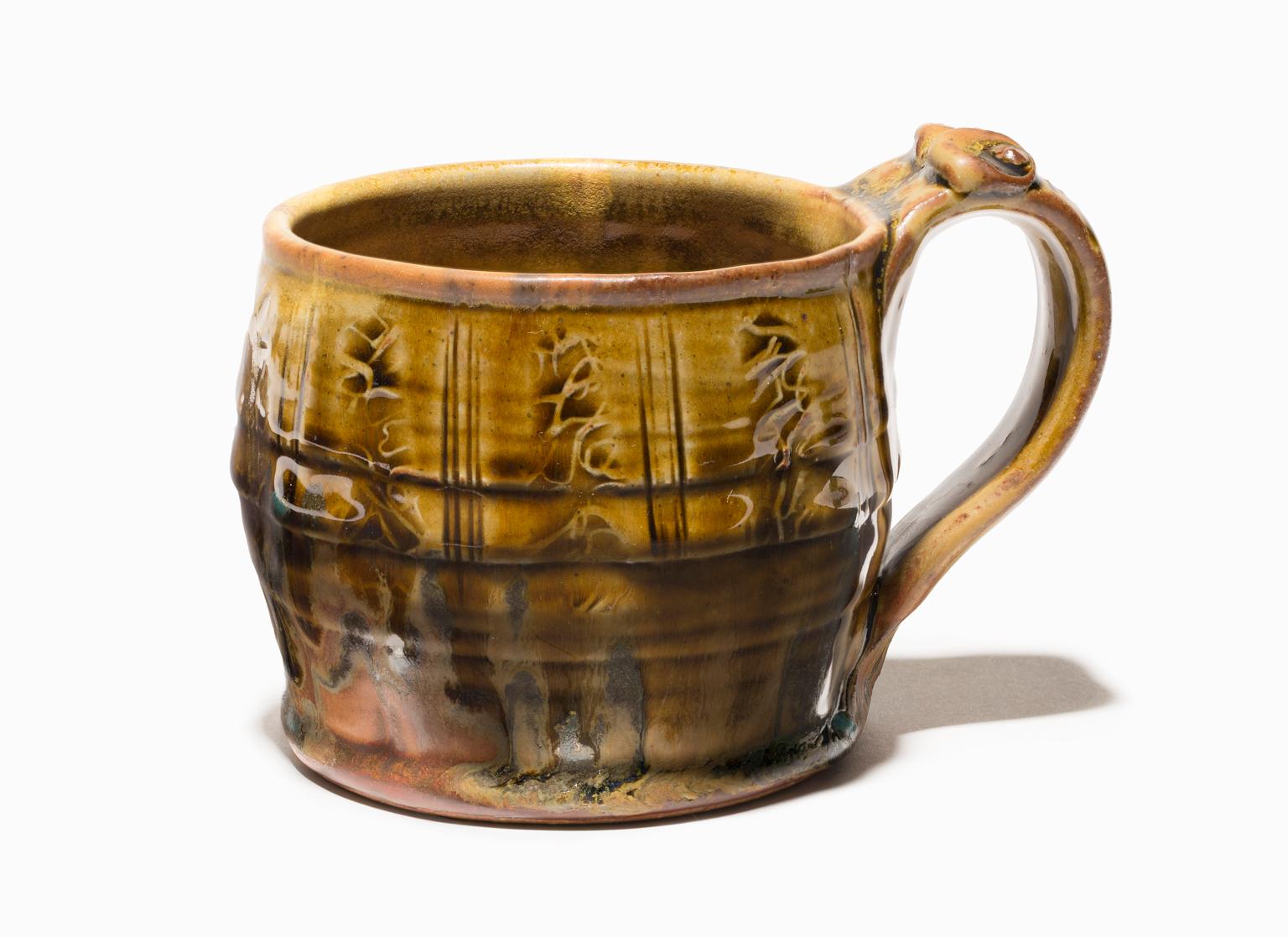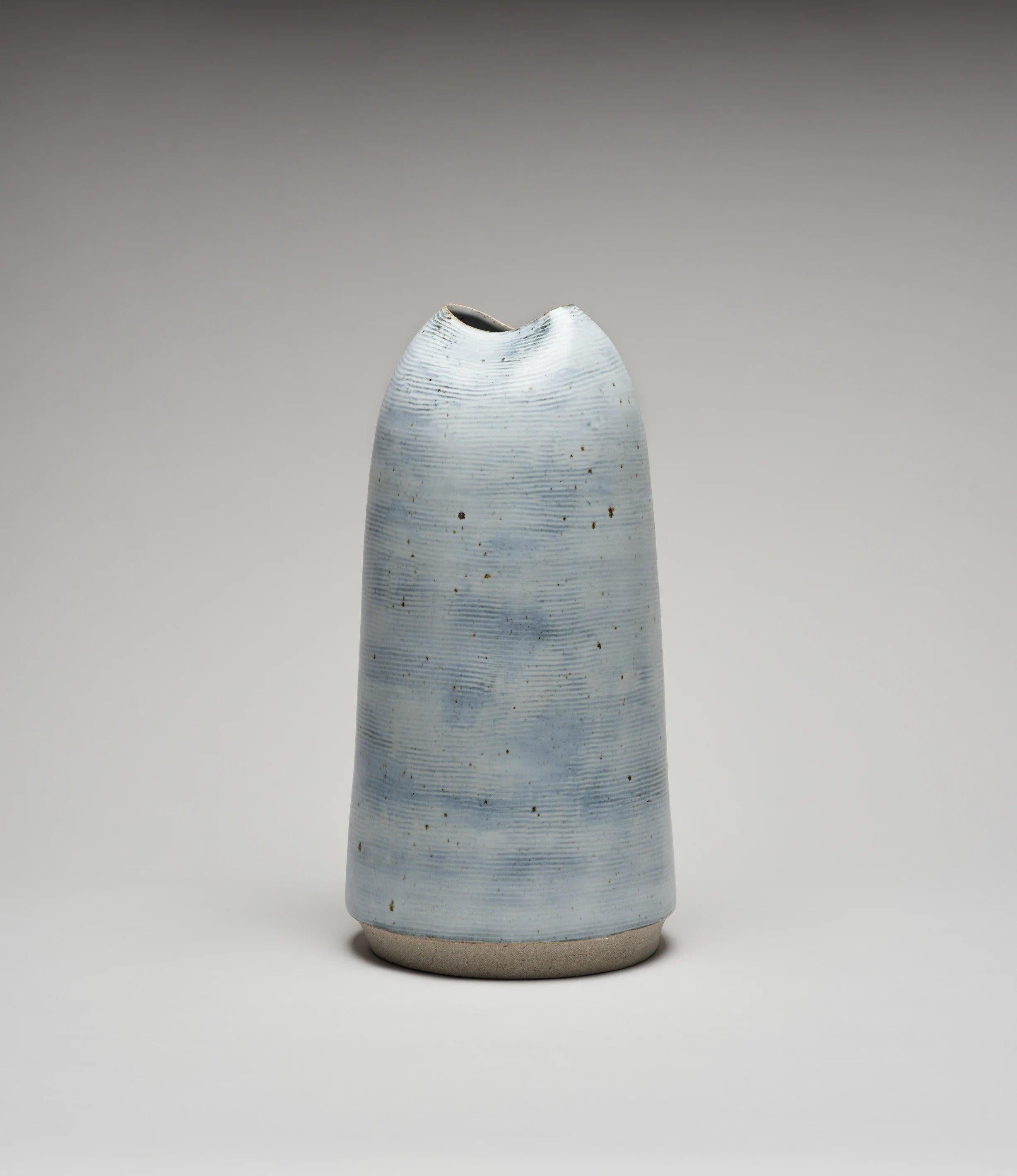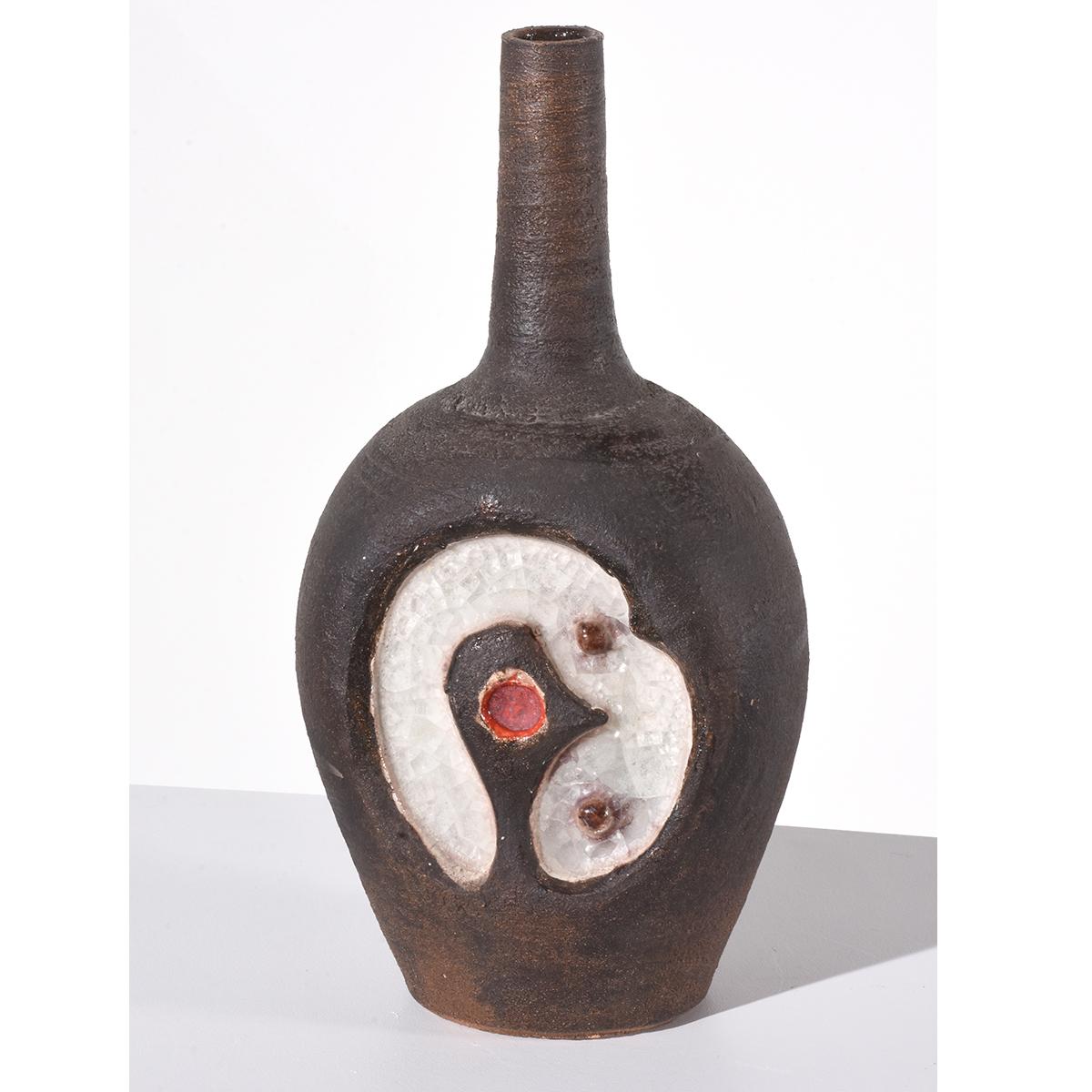Harding BlackEXTRA BEAUTIFUL CRACKLE VASE BY MASTER TEXAS GLAZER HARDING BLACK POTTERY1985
1985
About the Item
- Creator:Harding Black (1912 - 2004, American)
- Creation Year:1985
- Medium:
- Movement & Style:
- Period:
- Condition:Please visit my 1stdibs store front for additional items.
- Gallery Location:San Antonio, TX
- Reference Number:1stDibs: LU76933214863
Harding Black
Harding Black was born on a farm in Nueces County between Ingleside and Aransas Pass and moved with his family to San Antonio in 1916. There, he graduated from Brackenridge High School and attended San Antonio Junior College (1929–30). In 1931, Black joined an archaeological expedition to the Big Bend area sponsored by the Witte Memorial Museum. Initially a painter, he was taught by Rudolph Staffel in 1933 to make wheel-thrown pottery and in the same year began to teach children's ceramic classes at the Witte. Between 1937–39, Black directed ceramic installation in a San Antonio reconstruction project sponsored by the National Youth Administration and the Works Progress Administration art program. In 1955, he retired from teaching and devoted his time to ceramics. Black became a well-known ceramist from his research, innovations, and writings in the field.
- ShippingRetrieving quote...Ships From: San Antonio, TX
- Return PolicyThis item cannot be returned.
- "Huge Oxblood Vase" Beautiful from Texas Master Glazer Harding BlackBy Harding BlackLocated in San Antonio, TXHarding Black San Antonio (1912 - 2004) Huge Heavy Oxblood Vase 1984 Height 17'' At widest 5'' Biography Harding Black San Antonio (1912 - 2004) Harding Black was born on a farm in Nueces County between Ingleside and Aransas Pass and moved with his family to San Antonio in 1916. There he graduated from Brackenridge High School and attended San Antonio Junior College (1929-30). In 1931 Black joined an archaeological expedition to the Big Bend area sponsored by the Witte Memorial Museum. Initially a painter, he was taught by Rudolph Staffel in 1933 to make wheel- thrown pottery and in the same year began to teach children's ceramic classes at the Witte. Between 1937 and 1939, Black directed ceramic installation in a San Antonio reconstruction project sponsored by the National Youth Administration and the Works Progress Administration art program. In 1955 he retired from teaching and devoted his time to ceramics. Black became a well-known ceramist from his research, innovations, and writings in the field. Exhibitions: San Antonio Local Artists Annual Exhibition (1939-42, 1945, 1947); Texas General Exhibition (1940 award, 1942, 1948 honorable mention); National Ceramic Annual Exhibition, Syracuse Museum of Art (1947-54); River Art Group, San Antonio (1948-49); National Collection of Fine Arts, Washington D.C. (1951, 1956); Dallas Museum of Fine Arts (1952 one-man); Martin Museum of Art, Baylor University (1991 one-man); San Antonio Museum of Art (1995 retrospective); National Museum of Art, Washington, D.C. (1995); University of Texas at Dallas, Irving (1998 retrospective). Collections: Dallas Museum of Art; Museum of Fine Arts, Houston; San Angelo Museum of Fine Arts; San Antonio Museum of Art; Martin Museum of Art, Baylor University, Waco; National Museum of American Art, Washington D.C.; New Orleans Museum of Art; Everson Museum of Art, Syracuse, new York; Alfred University (New York). Harding Black resided in San Antonio Texas where he worked as a potter for over 60 years and far as anyone knows he was completely self taught. I find it amazing that anyone could ever accomplish what he did with with no formal training in either ceramics or chemistry. It was a long and prolific journey from the early hand built earthenware pottery to become recognized as a master of glazes. While I feel that his forms often could be better this is more than compensated for by the spectacular glazes he developed. Constant experimentation and his acquired knowledge of chemistry were the foundations for the wonderful glazes that adorn his pottery. The following quote is from an interview with Rudolf Staffel His copper reds are unbelievably beautiful. Harding was a master of glazes and one of the most generous human beings in the ceramic field that I've known. He had literally a room full of beautifully organized test tiles of all his glazes, and he would just throw the room open to anybody who wanted to rummage through his tiles. All the recipes were there and he shared them with anyone who was interested. It was wonderful to go and visit him. Although accurate records of all test firings were kept for reference it I have been told that it would be difficult to reproduce many of these glazes because of the kiln he built and clays he used. This may not be the case because in a recent phone conversation (4/11/2007) with Peter Pinnell he told me that some of his students had success replicating some glazes using Harding's formulas By concentrating on the bowl and vessel forms Harding remained true to the historical traditions of pottery making. The magnificent Harding Black journey began in 1932. At that time he joined the Witte Museum Archaeological Society which provided him with access to their collections of Native American pottery. Harding became fascinated by these pollychromed vessels and he began attempting to create hand built pots. He had very little or no success but a life long of working in clay had begun. It was about this time that he met up with Rudolf Staffel and it was from him that Harding learned wheel throwing and developed ideas of how to operate a studio. Harding was given access to working space at the Witte where he built a wheel and in 1933 he was given a position as ceramic instructor. In this position it was his responsibility to establish a ceramics department. The first kiln Harding built was using plans that were obtained from Newcomb College. He scrounged parts from a junkyard which were used in its construction. This project was not totally successful because of problems reaching required temperatures. As usual this did not deter Harding. He seemed to have a wonderful ability to learn from failure and move on. In the early 1940's Harding began working with formulas for copper red glazes prepared by Arthur Baggs and Edgar Littlefield. This work only added to his interest in Oriental pottery and fostered a desire to rework many old glazes. Being greatly influenced by A Potters Book published in 1940 by Bernard Leach Harding was now on his way seeking to incorporate form, function and surface treatment into a single entity where the whole is greater than the sum of the parts. In the 1950's Harding left the Witte and built his own studio where he spent the rest of his life creating his wonderful art. The body of his work is a living tribute to the Harding Black lifelong love of ceramics. Along with being a researcher he was also a teacher always willing to share his knowledge with others. He spent his life producing pots and occasionally taking time off to do a bit if fishing. According to Harding Black - Harding Black 11/14/90 "I am one of the lucky ones. When I get up in the morning I can hardly wait to get to work." 1912 Born April 15 near Aransas Pass, Texas 1916 Family moved to San Antonio 1929 Graduated from Breckenridge High School 1929-30 Attended San Antonio Junior College 1931 Joined Archaeological Society of the Witte Museum, San Antonio, and participated in excavations of ancient Basket maker Indian mounds and caves in the Big Bend area of Texas 1933 Taught by Rudolf Staffel to make wheel-thrown pottery. Set tip studio in a streetcar behind Witte Museum and began teaching children’s ceramic classes 1937-39 Appointed Superintendent of Ceramic Installation for N Y A /W P A reconstruction project in San Antonio 1943 Moved from streetcar studio to new facilities in the reconstructed Ruiz House on the grounds of the Witte Museum Began firing to stoneware temperatures 1947-54 Exhibited each year in the annual National Ceramic Exhibition, Syracuse Museum of Art 1951 Exhibited at the National Museum of Art, Washington, DC 1952 Toured ceramic centers throughout the United States 1953 “Opening the Door to Copper-Reds” by Harding Black, published in January issue of Ceramics Monthly “Harding Black Profile” published in February issue of Ceramics Monthly 1954 “Iron Spotted Glazes” by Harding Black, published in February issue of Ceramics Monthly 1955 Built present studio at 8212 Broadway, San Antonio Retired from teaching at the Witte Museum 1956 Exhibited at the National Museum of Art, Washington, DC 1961 “Lava Glazes” by Harding Black, published in October issue of Ceramics Monthly 1964 “Harding Black Texas Potter” by Jean R Lange, published in November issue of Ceramics Monthly 1971 The Meyer Family Master Potters of Texas, co-authored by Harding Black and Georgeanna H Greet 1980 Harding Black’s biographical information entered into the archives of the Smithsonian Institution, Washington, D C 1983 Harding Black traveled throughout China 1984 Awarded Glaze Research Grant by Southwest Craft Center, San Antonio 1985 Solo exhibition at the Southwest Crafts Center 1987 Selected as Artist of the Year by the San Antonio Art League 1988 Incarnate Word College, San Antonio, establishes Harding Black Fund to aid ceramics students 1990 “Harding Black Pottery...Category
1980s Modern More Art
MaterialsCeramic
- "GIRLS NIGHT OUT" MID CENTURY MODERN BATIK SAN ANTONIO ARTISTBy Margaret PutnamLocated in San Antonio, TXMargaret Putnam (1913-1989) San Antonio Artist Size: 15 x 16 Frame: 22 x 23 Medium: Batik "Girls Night Out" Margaret Putnam (1913-1989) Margaret Putnam left an artistic legacy rare e...Category
20th Century Modern Mixed Media
MaterialsFabric
- Large Wood Turned Hackberry footed Bowl. Dyed. Master Art Wood Turner CarmieBy CarmieLocated in San Antonio, TXCarmie (Born 1959) Dyed Hackberry Bowl Height 4'' Diameter 8.75'' Bio Carmie (1959-) Wood Turner Carmie K. Acosta was born and raised in San Antonio. By day he works as a synthetic organic chemist specializing in steroid synthesis. His foray into wood turning began in the year 2000 when his father passed away. Growing up, he was surrounded by wood working and the associated wood working tools...Category
2010s Modern More Art
MaterialsWood
- "MESQUITE BOWL WITH TURQUOISE"By CarmieLocated in San Antonio, TXCarmie Born 1958 Mesquite Bowl with Turquoise 11.5" Diameter 2.75" tall Biography Carmie Born 1958 Wood Turner Carmie K. Acosta was born and raised in San Antonio. By day he works as...Category
21st Century and Contemporary Modern More Art
MaterialsWood
- Mesquite hollow form vase/bowl. Natural Art Wood TurningBy CarmieLocated in San Antonio, TXCarmie (Born 1959) Rustic Mesquite Hollow Form Vase/Bowl Height 4.5" Diameter 5''Biography Bio Carmie (1959-) Wood Turner Carmie K. Acosta w...Category
2010s Modern More Art
MaterialsWood
- "MESQUITE BOWL WITH BEADS"By CarmieLocated in San Antonio, TXCarmie Born 1958 Mesquite Bowl with Beads 7" diameter 3.25" Tall Biography Carmie Born 1958 Wood Turner Carmie K. Acosta was born and raised in San Antonio. By day he works as a synt...Category
21st Century and Contemporary Modern More Art
MaterialsWood
- Picasso Ceramic, Trois sardines (A.R. 34)By Pablo PicassoLocated in Madrid, ESPABLO PICASSO (1881-1973) Trois sardines (A.R. 34) stamped, marked and numbered 'Madoura Plein Feu / Edition Picasso / I 113 / 28/200' (underneath) whit...Category
1940s Modern More Art
MaterialsCeramic
- Paire Bougeoirs Elephant, Candle Stick, Animal, Ceramic, Lalanne, DesignBy François-Xavier LalanneLocated in Geneva, CHPaire Bougeoirs Elephant, Candle Stick, Animal, Ceramic, Lalanne, Design Paire Bougeoirs Elephant Ed. 80 pcs 1985 Glazed ceramic and copper with original boxes 15 x 15.3 x 6 cm / 5.9 x 5.9 x 2.4 in.(each) Monogrammed, stamped, dated, numbered and editor's mark : FXL, Lalalnne, 85, EA43/80, EA42/80, Artcurial Certificate of authenticity issued by Artcurial Editon,. Provenance : Artist's Estate Collection of Marie Lalanne Literature : Claude et François...Category
1980s Modern Figurative Sculptures
MaterialsCeramic
- John Glick Plum Tree Pottery , Stoneware Mug, Deep Earth Tones, GlazedLocated in Detroit, MI“Untitled” ceramic, is an example of the kind of work by which John Glick became so famous. He was seduced by the effects of the reduction kiln, which decreased the levels of oxygen during firing, inducing the flame to pull oxygen out of the clay and glazes changing the colors of the glazes depending on their iron and copper content. In this way he achieved the rich gradients of ochre and umber and variations in stippling and opacity. This piece is signed on the bottom and can be found on page 129, plate #236 in “John Glick: A Legacy in Clay.” John was an American Abstract Expressionist ceramicist born in Detroit, MI. Though open to artistic experimentation, Glick was most influenced by the styles and aesthetics of Asian pottery—an inspiration that shows in his use of decorative patterns and glaze choices. He has said that he is attracted to simplicity, as well as complexity: my work continually reflects my re-examination that these two poles can coexist… or not, in a given series. Glick also took influences from master potters of Japan, notably Shoji Hamada and Kanjrio Kawai, blending their gestural embellishments of simple forms with attitudes of Abstract Expressionism. He was particularly drown to the work of Helen Frankenthaler whose soak-stain style resonated with Glick’s multi-layered glaze surfaces, which juxtaposed veils of atmospheric color with gestural marks and pattern. He spent countless hours developing and making his own tools in order to achieve previously unseen results in his work with clay and glaze. Glick’s “Plum Tree Pottery...Category
Late 20th Century American Modern More Art
MaterialsStoneware, Glaze
- John Glick Plum Street Pottery Reduction Fired Shino Glaze Cup Published in BookLocated in Detroit, MI“Untitled” ceramic, is an example of the kind of work by which John Glick became so famous. He was seduced by the effects of the reduction kiln, which decreased the levels of oxygen during firing, inducing the flame to pull oxygen out of the clay and glazes changing the colors of the glazes depending on their iron and copper content. In this way he achieved the rich gradients of ochre and umber and variations in stippling and opacity. This piece is signed on the bottom and can be found on page 92, plate #125 in “John Glick: A Legacy in Clay.” John was an American Abstract Expressionist ceramicist born in Detroit, MI. Though open to artistic experimentation, Glick was most influenced by the styles and aesthetics of Asian pottery—an inspiration that shows in his use of decorative patterns and glaze choices. He has said that he is attracted to simplicity, as well as complexity: my work continually reflects my re-examination that these two poles can coexist… or not, in a given series. Glick also took influences from master potters of Japan, notably Shoji Hamada and Kanjrio Kawai, blending their gestural embellishments of simple forms with attitudes of Abstract Expressionism. He was particularly drown to the work of Helen Frankenthaler whose soak-stain style resonated with Glick’s multi-layered glaze surfaces, which juxtaposed veils of atmospheric color with gestural marks and pattern. He spent countless hours developing and making his own tools in order to achieve previously unseen results in his work with clay and glaze. Glick’s “Plum Tree Pottery...Category
1990s American Modern More Art
MaterialsStoneware, Glaze
- Cliff, 2020, Porcelain. Thrown on a wheel. Fired multiple times 1280°By Tanya Gomez 1Located in London, GBTANYA GOMEZ Cliff, 2020 Material: Porcelain. Thrown on a wheel. Fired multiple times 1280° 43 x 22 cms 16 93/100 x 8 33/50 inches (TG003) Tanya Gomez is a celebrated ceramist renown...Category
2010s Modern More Art
MaterialsPorcelain
- Aldo Londi Vase Abstract "Glass Fused Ceramic Vase"Located in Detroit, MISALE ONE WEEK ONLY "Glass Fused Ceramic Vase" is vintage Mid-Century Modern. This handsome vase has an elongated neck with a white glass-fused inlay porti...Category
Mid-20th Century American Modern More Art
MaterialsCeramic, Glass
